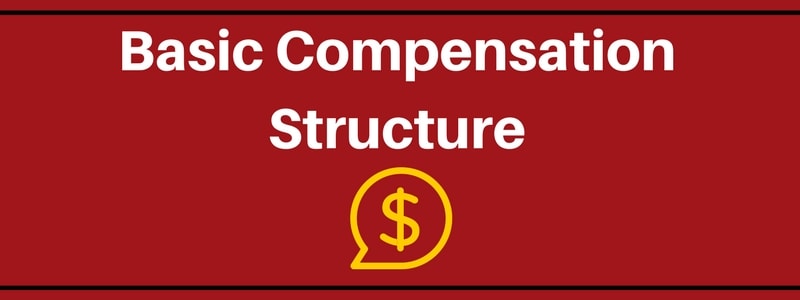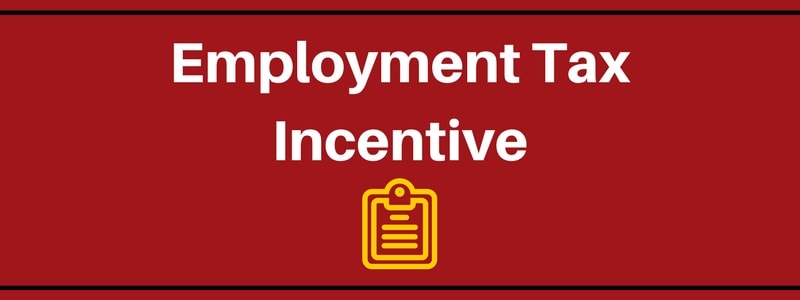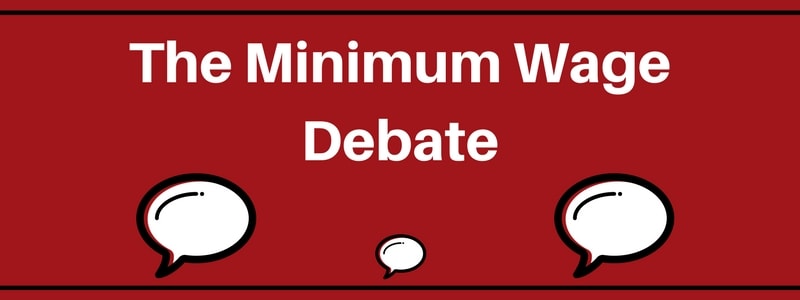Compensation & The Minimum Wage
Compensation & The Minimum Wage
Whether you are entering the job market for the first time as a high-school or university graduate, or re-entering the job market after a hiatus (such as maternity leave, or a medical leave of absence), or just looking for a new job; knowledge is power.
Knowing the basics of company compensation structures, knowing your rights, and understanding incentive structures puts you in the best position to assess offers and make demands when you’re being courted by a potential employer.
While you may think you know all there is to know, when last have you checked up on our country’s minimum wage legislature?
Do you know whether or not your employer is qualifying for Employment Tax Incentives by employing you, and therefore saving money that you should hope to see some payout for, perhaps in the form of the employer’s ability to offer incentives?
If you’d like to be able to make the best decisions for your financial future, keep reading.

What Are The Basics Of Compensation Structure?
For most companies, compensation forms the largest part of the total overhead costs of running the business.
Ensuring that your business’s payroll is a fruitful investment and not a fruitless expense, means examining what exactly it is that you as an employer expect as a return on your investment.
Unfortunately, there are no hard and fast rules to measure your progress or success against.
Rather, there are a number of considerations to be made depending on the current position of your business, financial and otherwise. Is your company recruiting new talent? Or reviewing remuneration policies? How about contemplating restructuring?
No matter the current position of the business, and no matter the action being contemplated, ask yourself: how would this enable my company to achieve it’s goals?
When contemplating compensation, it is, however, important not only to ask yourself how this expenditure is going to help your business achieve it’s goals, but also to ensure that you as the employer are meeting the obligation to pay your employees “equal pay for equal work of equal value” (as the recent Employment Equity Act Amendments dictate).
At present, salary benchmarking, job grading and performance management are serving as the primary tools for evaluation and have become more popular as companies’ priorities have shifted toward attempts to highlight the conscious effort they are making to eliminate unfair discrimination in the workplace.
Companies are being compelled to revisit their remuneration strategies, and to ensure that their strategies meet the minimum requirements in terms of legislature.
Legal requirements aside, employers are also facing increased pressure to ensure that their remuneration strategies meet and/or satisfy economic, individual and business demands.

Basic Components Of Compensation
The following are components of a traditional remuneration package.
When structuring your company’s payroll or remuneration profile, it is important to consider the following:
1. Basic Salary
This refers to the monthly salary an employee receives for completing work and meeting the terms set out in their contract.
The basic salary is determined taking into account an employee’s skills, and knowledge, as well as an employee’s level of experience, and the extent of their responsibilities in their current role.
Employers may also measure the value of the work done by the employee against industry standards and/or market trends, and this may impact the calculation of an employee’s basic salary.
2. Fringe Benefits
Fringe benefits refer to special bonuses payable to the employee above and beyond their basic salary.
Job seekers traditionally consider fringe benefits a deciding factor when looking for and accepting work; and offering fringe benefits sets prospective employers apart.
Fringe benefits may include but are not limited to: pension funds, medical aid coverage, housing subsidies, study assistance, or another type of allowance.
Fringe benefits are a win-win, as they may help a company attract more talented employees who are looking for lucrative compensation, and fringe benefits offer a much welcomed tax break for the company.
3. Short And Medium Term Incentives
Performance bonuses, incentives and commission are great extrinsic motivators for rewarding achievements in the short and medium term.
However, a word of caution: before implementing bonus and incentive systems as a primary means of motivating employees, it is important to carefully evaluate whether the individuals’ roles allow them to, or create a fair probability of, their attaining the set targets.
In other words, evaluate whether they have the tools to achieve measurable, realistic and agreed upon goals in order to receive meaningful rewards which are fairly and consistently applied.
4. Long Term Incentives
Long term incentives are meant to improve employee retention, and to award long term dedication to meeting company goals.
Long term incentives can be cash-based or equity-based, such as company share or stock options, or can be in the form of additional leave benefits or other relevant incentive rewards.
5. Compensation Objectives
Essentially, your company needs to have a set of goals they hope to achieve by paying the employee. What does the company hope to receive as a return on their investment, so to speak.
Compensation objectives may include, but are not limited to:
- To attract suitable candidates
- To retain key talent
- To maintain equitable remuneration practices
- To maintain optimal cost-effectiveness
- To comply with legal requirements
- To provide flexibility and administrative efficiency
The Intangibles
The employer-employee relationship is one rife with fascinating and often unstable and/or undefined dynamics.
The slightest change to a variable could upset the apple cart! Therefore, it is important not to ignore the human aspect of human resources.
Each and every one of us are different, and so our relationships are different, what motivates us is different, and what excites us is different. As a result, it is important to remember that, while employee A may be an incentive-driven employee, employee B may respond to the opportunity to further his studies on the company dime.
A simple example, perhaps, but the thing to take away from it is that our intrinsic motivational factors differ.
These factors can greatly impact job satisfaction if your compensation structures don’t take this diversity in employee motivation into account. It is important to consider how diverse intrinsic motivational factors can be addressed in your compensation strategies in order to further the aim of meeting company goals.
In other words, all compensation does not need to be monetary or tangible. One cannot deny the invaluable return on the investment of professional recognition, opportunities for development and acknowledgment of others’ needs.
Businesses that excel pay close attention to how the compensation structure is optimised as an investment in human capital, taking into account both financial and non-financial compensation aspects.
Statutory obligations aside, a well-designed compensation plan is crafted to attract and retain key talent and maximize return on investment in line with the strategic imperatives of the company.

How Year End Bonuses Fit Into The Compensation Plan
By November 1st all the stores are decked out in their holiday finery and the tension in the air is palpable!
Every beat of your exhausted heart is saying “it’s almost vacation, it’s almost vacation, it’s almost vacation”…
There is also the possibility that the end of a year may mean an annual bonus or a 13th cheque for you!
Unless a 13th cheque is part of your employment contract, or the company you work for is obligated to pay bonuses as dictated by a bargaining council, many employers will consider any bonuses payable part of their short- and medium-term incentive strategies.
There are many factors to take into consideration, however, and they may impact an employer’s ability to offer bonuses or 13th cheques.
Sales, production numbers, turnover, individual contributions and affordability are only some of the factors your employer will need to consider play making bonus allocation decisions.
Employers will always weigh the benefit of the incentive investment against the cost to the company of paying bonuses.
As an employer, it is important to assess what you hope to achieve through paying bonuses.
While the holiday season is traditionally one of giving, and it is certainly your prerogative as business owner to reward your employees for a year’s loyal service, using a 13th cheque- or end of year-type bonus may not significantly impact employee behaviour in terms of job motivation in the year to come.
Often, shop floor level workers feel disconnected from the overall company performance and view a year-end bonus as a symbolic gesture rather than a strategic incentive.
In other words, there is no correlation between awarding bonuses and increased productivity among employees.

If the aim of paying bonuses is to have a meaningful and motivating reward system in place, there are many other options that are far more effective than the across-the-board, traditional holiday bonus.
For the majority of employers, it makes more sense to structure their bonus budgets in such a way that individual effort is recognized and rewarded throughout the year, as opposed to offering an annual bonus to everybody.
Research has shown that performance-based bonuses yield higher employee satisfaction survey scores, strengthen employee-manager relationships and promote achievement of company goals throughout the year.
Employee performance, and employee perception of the company are impacted far more by this type of recognition and reward strategy than by across-the-board annual reward-type strategies.
Meaningful performance-based incentives also need not always be monetary.
Offering employees intangible rewards, such as extra paid days off, or electronics or tangible gifts may mean more to an employee than cash.
Cash is easily spent on routine purchases, and the memory and satisfaction of being rewarded fades fast once the money is gone.
So what does an effective bonus structure look like?
5 Key Ingredients For Effective Bonus Structure Planning:
– Timeliness –
Research has shown that offering bonuses more frequently, however small they may seem when compared to a once-a-year lump sum, has a greater impact on employee wellness and overall productivity.
It also compels management to reevaluate and update goals and achievements far more frequently, which is good for business.
– Predictability –
Effective bonus plans are predictable. While this means that they are fairly and consistently awarded, it also means that they are easy for employees to understand and “manipulate”.
Bonus structures need to be transparent.
An employee needs to know that if they put in (x) amount of hours they will get (y) as a reward. Guessing games and uncertainty will leave employees unmotivated.
– Consistency –
Bonuses should be based on the same calculation for as long as possible. Specific activities may change every now and then but the payout period, bonus formula and the number of goals upon which the bonus is based should stay as consistent as possible.
– Fairness –
The employee needs to be able to actually influence the outcome or result.
In other words, the goals set by the employer must be attainable goals. The employee’s effort must also be quantifiable, and the employee must be made aware of, and must understand the unit of measurement.
Bonuses should communicate to an employee what is important to the company. In other words, it is also important that the employee understand how his or her individual contribution is helping the company achieve bigger goals.
This will motivate employees as they feel connected to the bigger picture.
They can see how their jobs are bigger than themselves, and how they are directly contributing to achieving bigger goals.
– Meaningful Bonuses –
Bonuses based on performance must serve as a reward for doing more than what is expected.
Monthly salaries are there for everyday expenditure and bonuses serve as motivators. Meaningful bonuses can be directly linked to individual activities or behaviours that produce the desired results.
Companies can also make other considerations and take different measures to make bonuses more meaningful. Some companies have introduced systems where employees can earn points for exceeding expectations and/or going the extra mile.
Employees can then choose when to “cash out” and can exchange their points for anything from spa and travel vouchers to paid days off, and even all-expenses-paid holidays.
In these trying economic times, everybody is pinching pennies, but nobody likes to feel like their efforts aren’t recognized.
This is why it is so important to business and financial success for employers and employees to collaborate on generating bonus strategies that suit the employer’s pocket while motivating the employees.
So how can you, as an employer, save money without negatively impacting production by hiring fewer people, or lowering the quality of your product due to cost cutting?

What Is Employment Tax Incentive (ETI)?
While the current youth unemployment rate in South Africa is actually down around 4%, our country still has an over 50% youth unemployment rate.
According to the WEF’s (World Economic Forum) Global Risk report (2014), South Africa had the third highest rate of youth unemployment in the world!
Even having improved a handful of percentage points, more than 50% of South Africa’s youth today are not participating in or contributing to our country’s economic activity!
Young people entering the job market in 2017 are not gaining the skills or necessary work experience to drive our economy forward in the future. As the WEF’s 2014 Risk Report serves to illustrate, this challenge is by no means a recent development.
The reality is that, given the increasing social instability in South Africa, unemployment is becoming an even bigger concern.
In an effort to alleviate the problem, the Employment Tax Incentive (ETI) was introduced in January 2014 and was originally scheduled to be reviewed, possibly terminated, on 31 December 2016.
On that date, the decision was made to continue with the programme, and the programme is currently scheduled to be reviewed again on 28 February 2019.
The Employment Tax Incentive was implemented to encourage employers to employ young and less experienced job seekers.
The aim of which is to reduce the cost of hiring young people for potential employers through a cost-sharing mechanism with the government.
Who qualifies for ETI?
- The employer is eligible to receive the ETI incentive if the employer“
- Is registered for employees’ tax (PAYE);
- Is not in the national, provincial or local sphere of government;
- Is not a public entity listed in Schedule 2 or 3 of the Public Finance Management Act (other than those public entities designated by the Minister of Finance by Notice in the Gazette);
- Is not a municipal entity;
- Is not disqualified by the Minister of Finance due to displacement of an employee or by not meeting such conditions as may be prescribed by the Minister by regulation.
- An individual is a qualifying employee if he or she
- has a valid South African ID or Asylum Seeker permit;
- is between 18 and 29 years old
- the individual’s remuneration is less than R6000.00 per month.
- is not a domestic worker;
- is not an independent contractor;
- was employed by the employer or an associated person to the employer on or after 1 October 2013; and
- is not an employee in respect of whom an employer is disqualified to receive the ETI. Namely, the employee is paid below the minimum wage or paid a wage below R2 000 per month if a minimum wage not applicable.
There is no limit to the number of qualifying employees that an employer can hire.
The ETI applies to permanent, seasonal, fixed-term or non-permanent employees as well as learners in terms of a learnership agreement and that are employed by the employer company provided the above criteria are met.

How is it calculated?
Employers can calculate and claim the incentive on a monthly basis by following these steps:
- Identify all qualifying employees in respect of that month
- Determine the applicable employment period for each qualifying employee (remember the employee must have been employed only from October 2013)
- Determine each employees monthly remuneration
- Calculate the amount of the incentive per qualifying employee as per the table below.
- Adjust the ETI field on the EMP201 with the applicable ETI amount
| Monthly Remuneration | Employment Tax Incentive for first 12 months | Employment Tax Incentive per month for the following 12 months |
| R 0 – R2 000 | 50% of Monthly Remuneration | 25% of Monthly Remuneration |
| R 2 001 – R4 000 | R1 000 | R500 |
| R 4 001 – R6 000 | Formula:
R1 000 (0.5 x (Monthly Remuneration R4 000)) |
Formula:
R500 (0.25 x (Monthly Remuneration R4 000)) |
When will an Employer not be able to claim ETI in a month?
An employer will not be able to claim ETI when he or she;
- has failed to submit any return;
- has any tax debt outstanding, excluding
- where an agreement has been concluded for a deferral payment;
- where an agreement has been concluded for compromise of a tax debt;
- where a tax debt has been suspended pending an objection or appeal; or
- where the tax debt is less than R100.
When can the ETI be rolled over from one month to the next?
An incentive amount may be rolled over:
- if the incentive amount available exceeds employees tax due in a month. The excess may be carried forward to the next month;
- if the employer does not reduce the PAYE by the ETI, despite the ETI being available to that employer; and
- if the ETI was not available to the employer due to non-compliance. The ETI is deducted in the month in which the employer corrects the noncompliance.
A good payroll software system should calculate ETI amounts automatically and allow the employer to claim monthly on the EMP201.
Along with reduced PAYE, employers are in a position to foster and develop skills, knowledge and experience of a generation upon which the future of the country depends.
Combined with other strategies such as succession planning and skills development, companies have the opportunity to not only contribute towards community and societal well-being, but also enhance the company’s sustainability in the long run.
Great, now we’ve taught your employer how to save money so as to be in a position to offer you incentives; but how can we help you, as the employee, get a better basic salary?

How To Navigate Salary Negotiations Like A Pro!
Whether you’re looking for your first ever “real job” or are a seasoned professional, salary negotiations can be tricky to navigate!
Herewith follows the Top 5 Salary Negotiation Mistakes to Avoid:
1. Not Negotiating
Your biggest mistake would be not to negotiate at all!
Studies have shown that first-time/young job-seekers and female job-seekers tend to make this mistake most frequently.
Even if the thought of salary negotiating makes you queasy, or you’re not familiar with the process, it’s always in your best interest to bite the bullet and negotiate!
Not only is it expected of you (in some professions, like sales) to negotiate your salary, but you may suffer some long-term consequences of selling yourself short, such as: smaller raises, a smaller pension, fewer benefits etc.
2. Giving Away Too Much
Poker face, baby! Poker face…
Many prospective employers will ask you very early on in the interview process about your salary requirements or expectations.
BE AS NON-COMMITTAL as humanly possible!
If you reveal what you’d be happy with as a starting salary too early on in the interview process you may shoot yourself in the foot in terms of negotiations later on!
By giving non-committal answers, you leave yourself room to bargain during negotiations instead of tying yourself down to a set figure from the get-go.

3. Inferior (or lack of) Research
When you’re headed into negotiations it helps to be prepared!
Know what your market value is, do research as to what your competitors are earning and present this information to your employer when negotiating!
This will also help prevent you from making ludicrous demands.
4. Jumping The Gun
Given our country’s unemployment statistics you may be tempted to jump at the first offer that comes your way – but once you’ve accepted a job offer you no longer have any leverage when it comes to negotiating salary or benefits.
5. Waiting Too Long
That being said you also cannot wait too long to accept a job offer.
Should the offer not be satisfactory you should draft a counter-proposal as soon as possible, BUT pick your battles carefully.
Revising more than one or two elements of the proposed contract may get your offer thrown out.
Focus on your main concerns and don’t be afraid to be flexible and creative in your counter-proposal!
If the company is unwilling to negotiate in terms of salary, for example, you could ask for more vacation time, increased performance reviews and opportunities for assessment-driven raises etc.
Finally, it is important to note that doing your research also means knowing your rights.
Make sure that the salary being offered you meets legislative dictates.
Did you know that South Africa is currently undergoing a minimum wage requirement overhaul?
Do you even know what the current minimum wage is?
Is your company in compliance?

The Minimum Wage Debate
Many of you may be able to recall your first ever holiday job – the part-time gig you worked for pocket-money in high school, or the barista gig that helped you afford more than just 2-minute noodles during your university years; but do you remember how much you got paid?
Not even a decade ago the minimum wage in South Africa for casual or part-time employees stood at only R12,50 per hour.
Today, the minimum wage for casual work per hour is almost double that!

Here are the facts:
- In November 2016 Cyril Ramaphosa announced that the new proposed national minimum wage is R3500 per month.
- The government hopes to implement these proposed new minimum wage standards by 2019.
- If we assume that employees work a 40-hour week, therefore +/- 160 hours a month, then the R3500 per month salary translates into +/- R20 per hour.
- R20 per hour represents the current prescribed minimum wage for casual or part-time employees*.
- *That being said; deputy president Ramaphosa signed the national minimum wage agreement stipulating that all employees are entitled to a minimum wage of R20 per hour in early 2017. While most companies have respected and implemented this new minimum wage agreement since its signing; it will only officially be enforced/come into effect in May of 2018.
- While it was initially suggested by some parties involved in the debate surrounding the national minimum wage, that domestic workers should be entitled to only 75% of the prescribed national minimum wage (of R3500 per month), and that agricultural workers should be entitled to only 90% thereof; Ramaphosa and the powers that be seem to have rejected the proposal, instead advocating for a standard minimum wage for all.
How does the proposed national minimum wage stack up when measured against the global market?
At the proposed minimum wage of R20 per hour, or R3500 per month, South Africa’s national minimum wage would be comparable to that of Poland and Turkey.
While South Africa would then still find itself on the lower end of the scale; the country would still place well above Mexico – the comparison country with the lowest national minimum wage as per the April 2016 World Economic Forum study.
While conversations about money ultimately make everybody a little bit uncomfortable, sometimes you’ve got to step outside your comfort zone in order to ensure that your basic rights are being respected, and you are able to make ends meet.
If you need help, or want any further information on anything salary or wage related, please don’t hesitate to contact Danshaw Consulting today.










